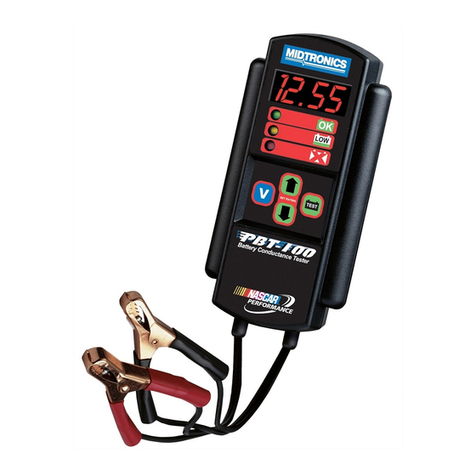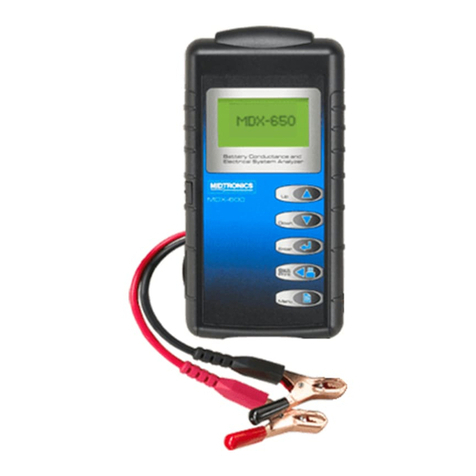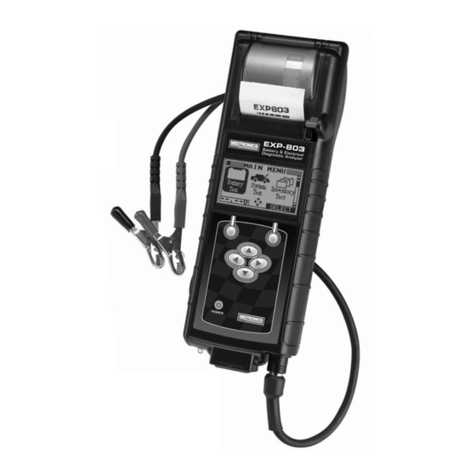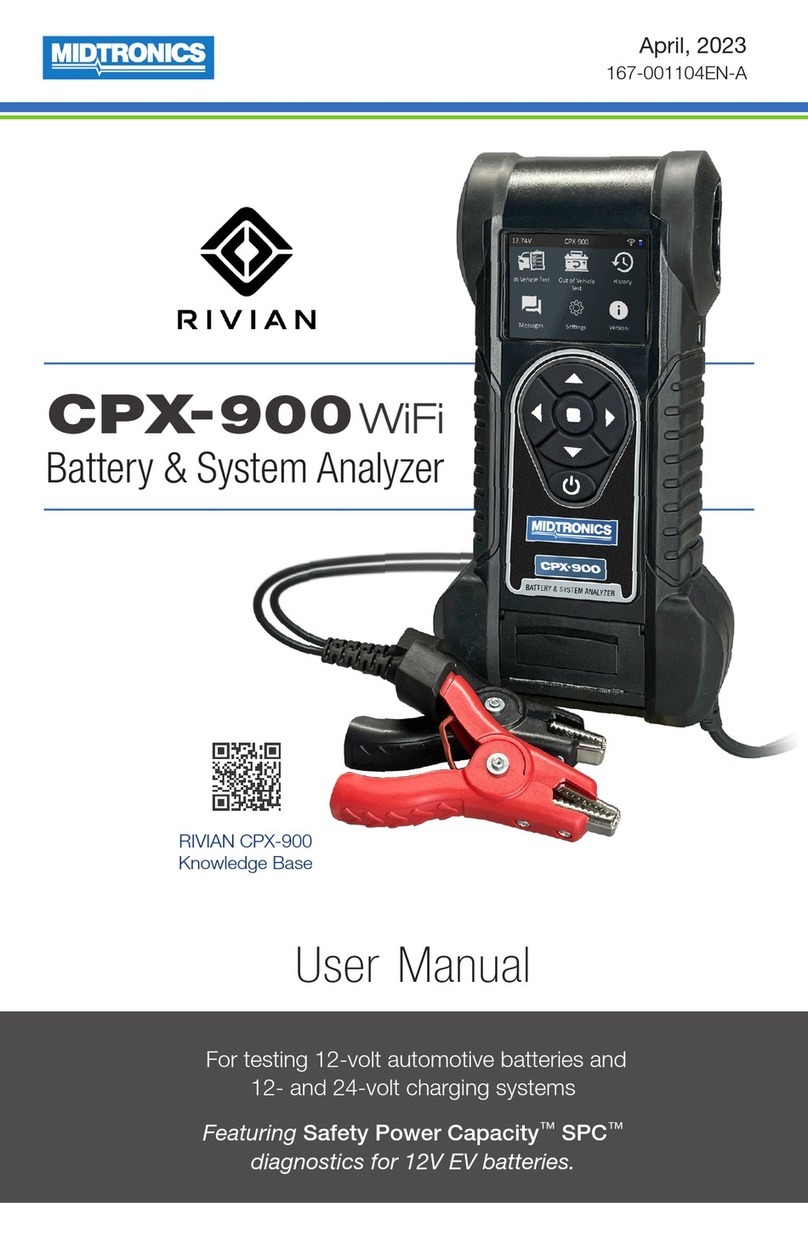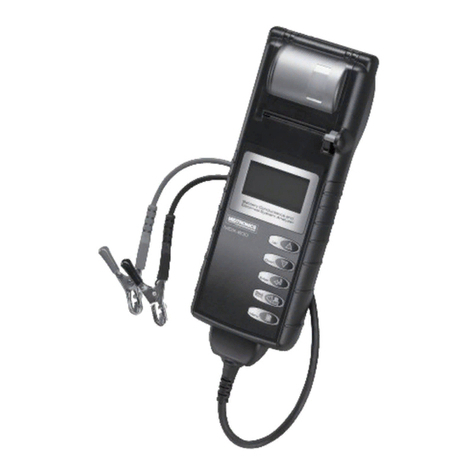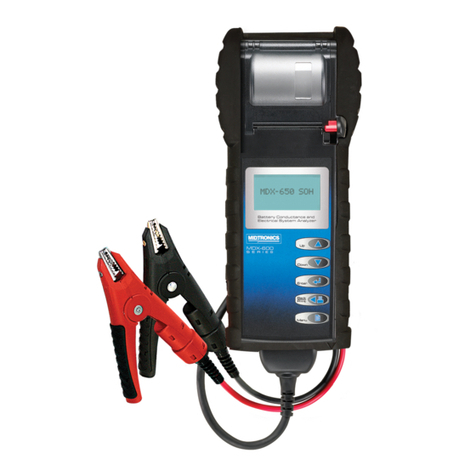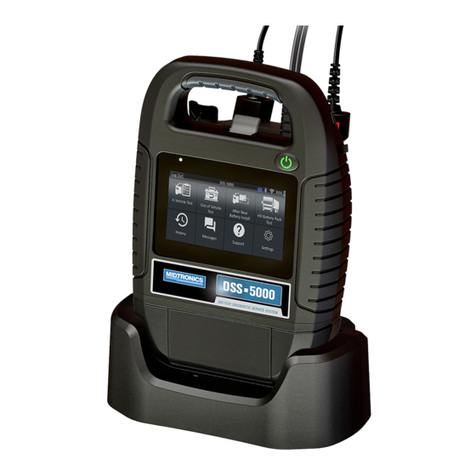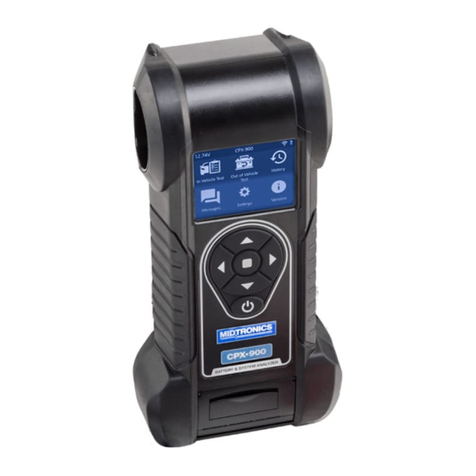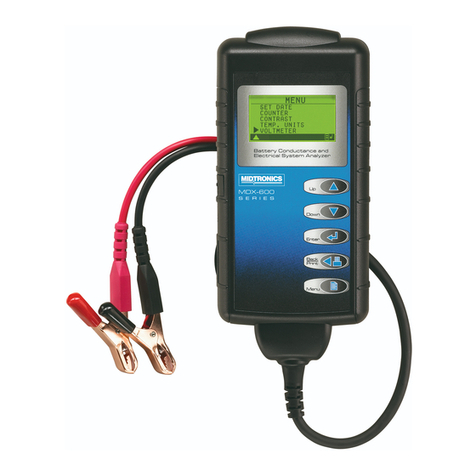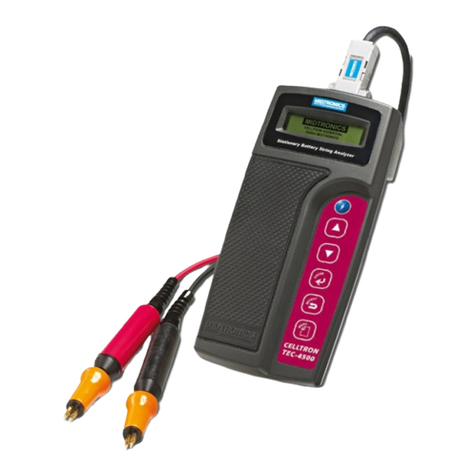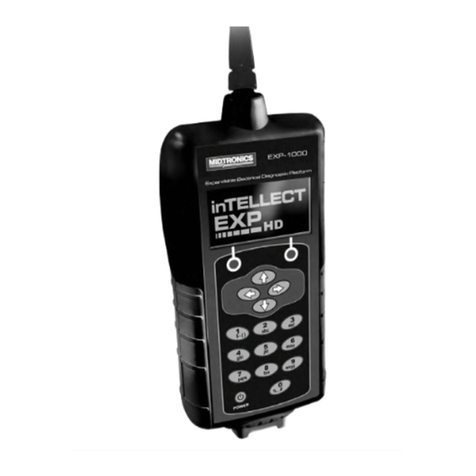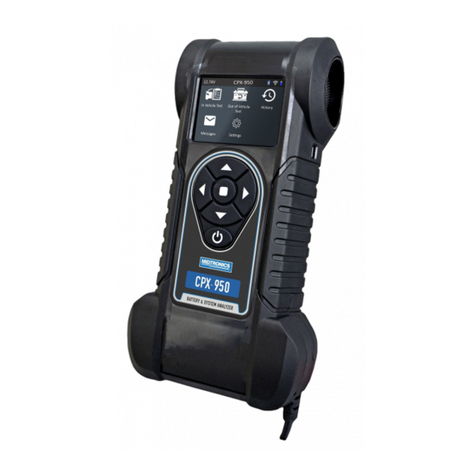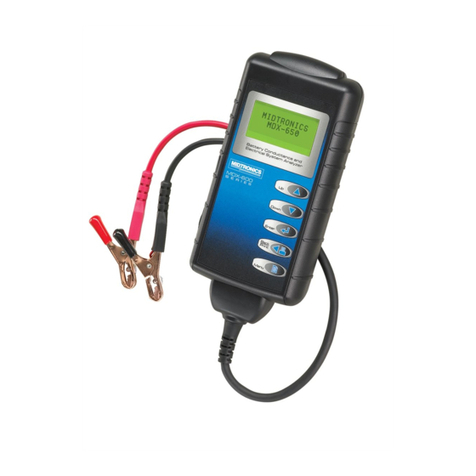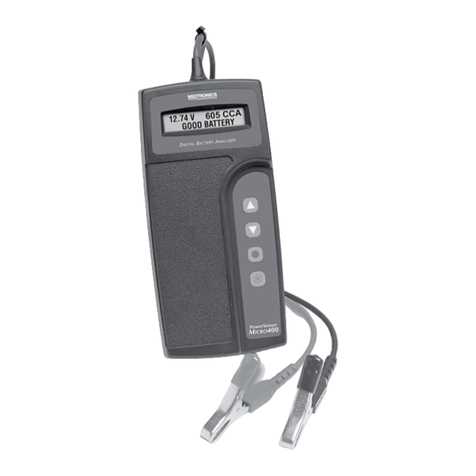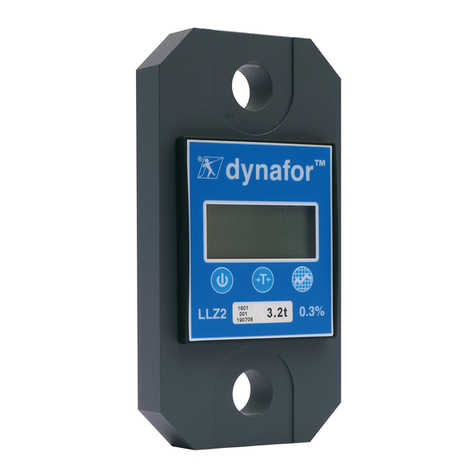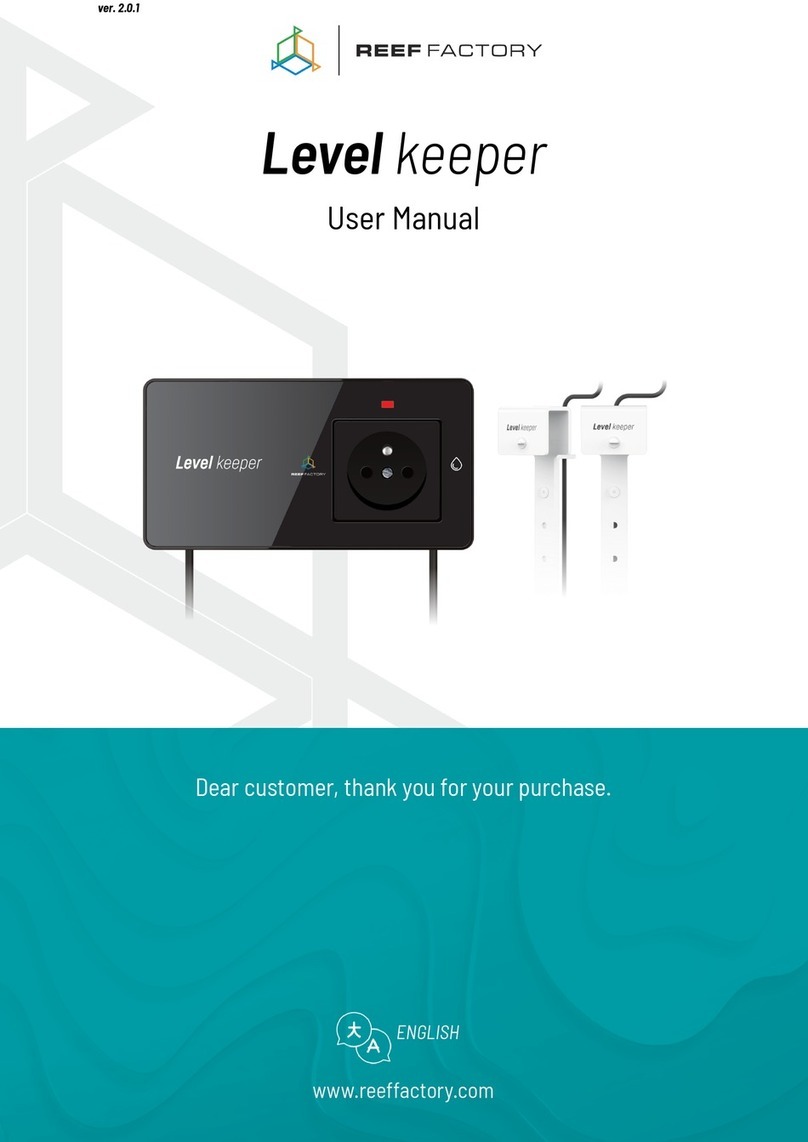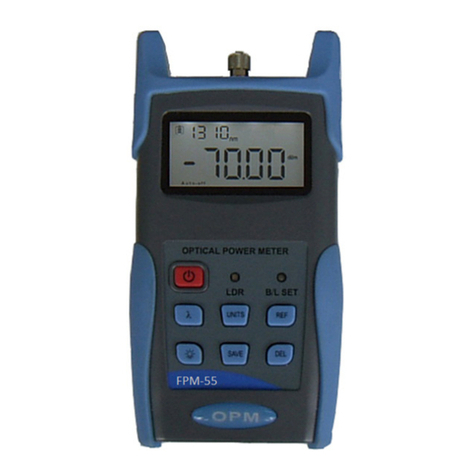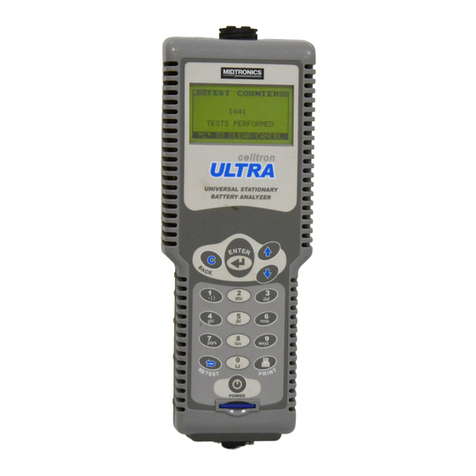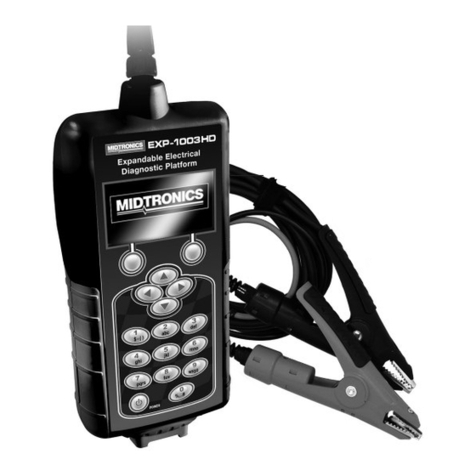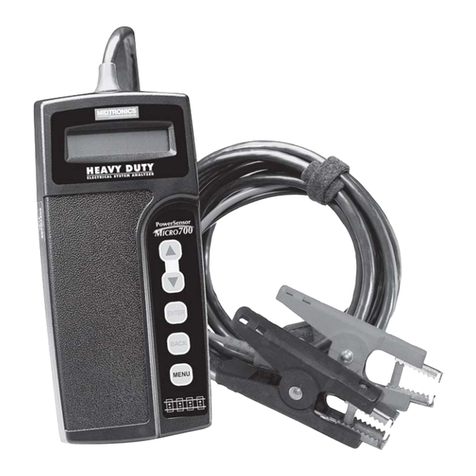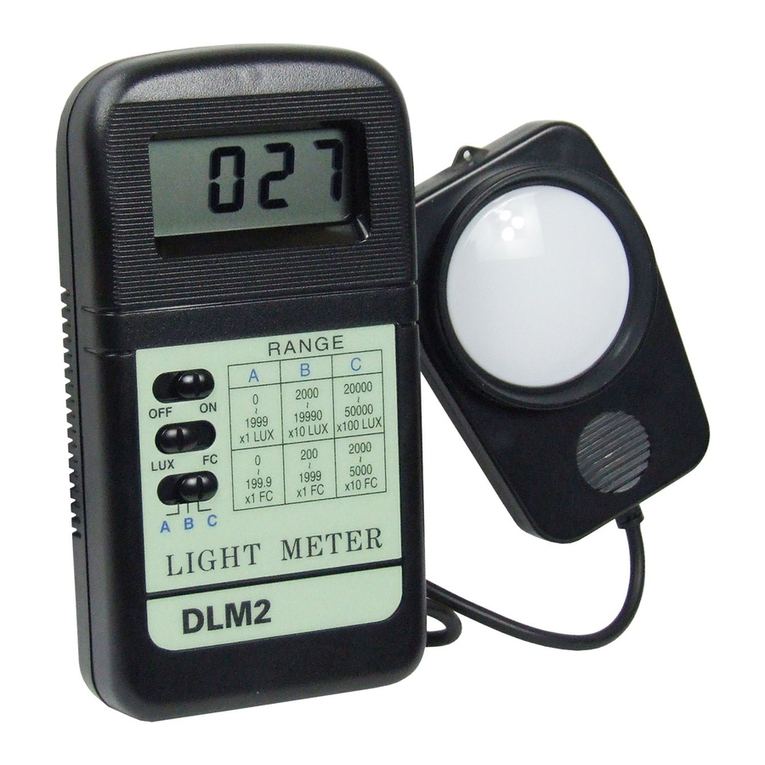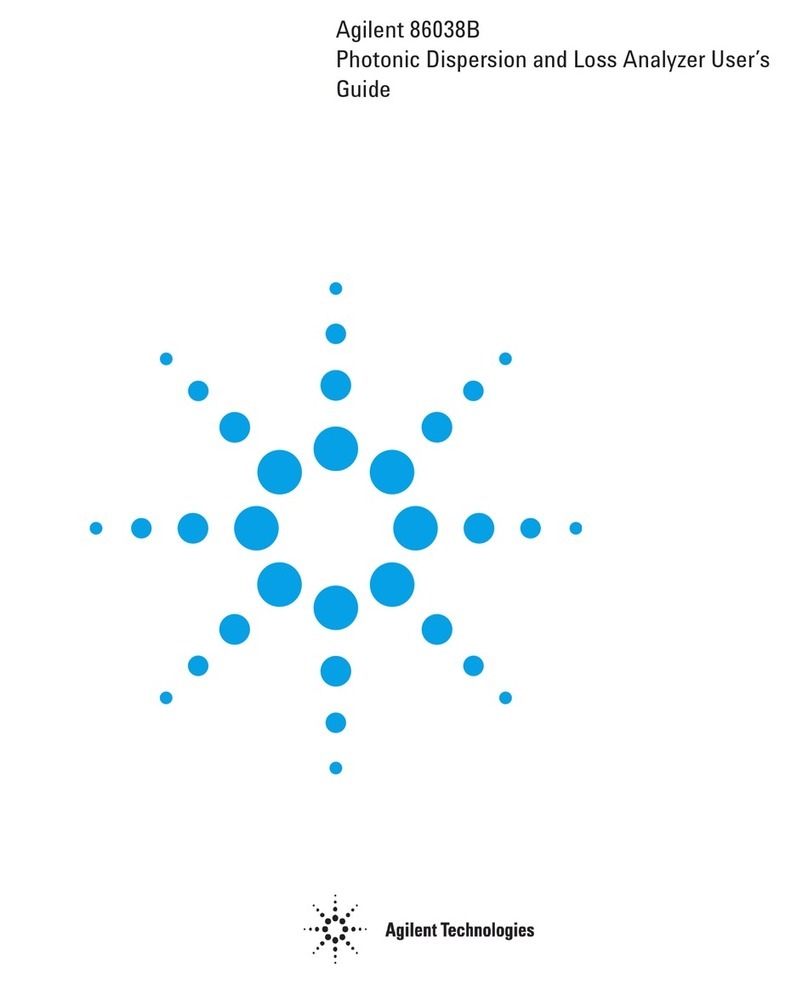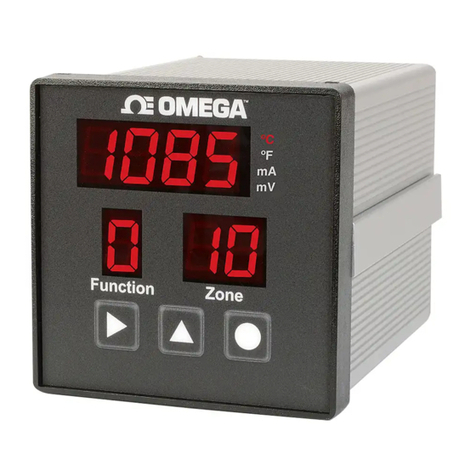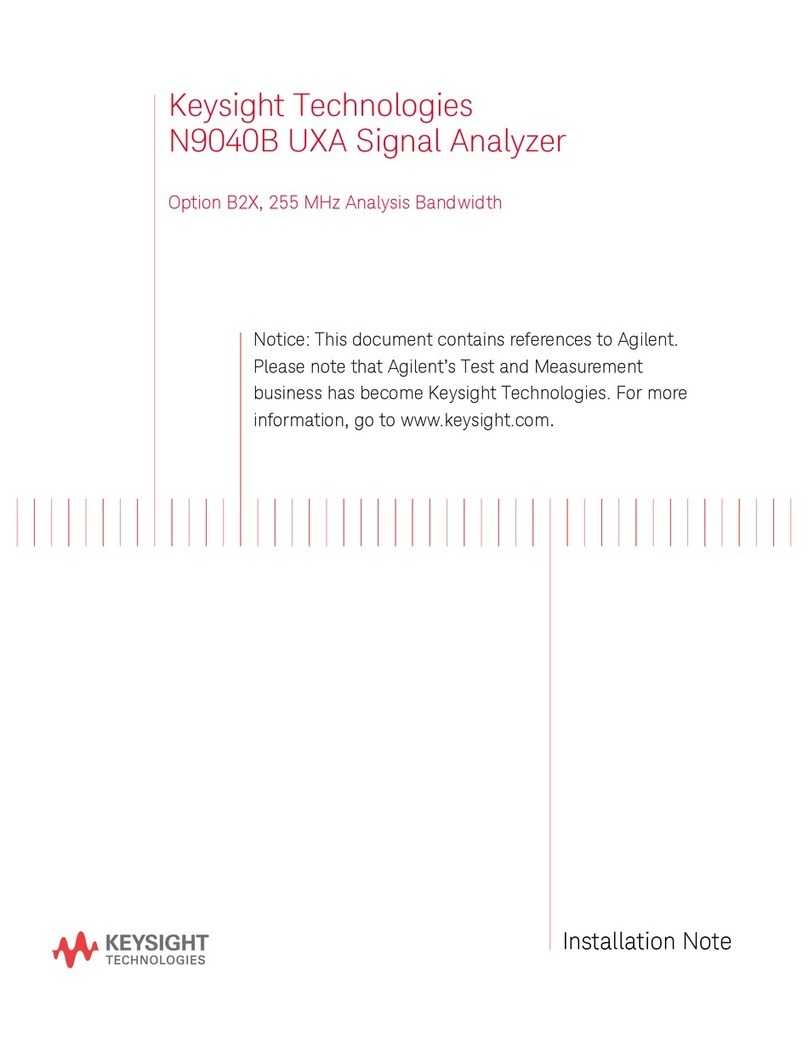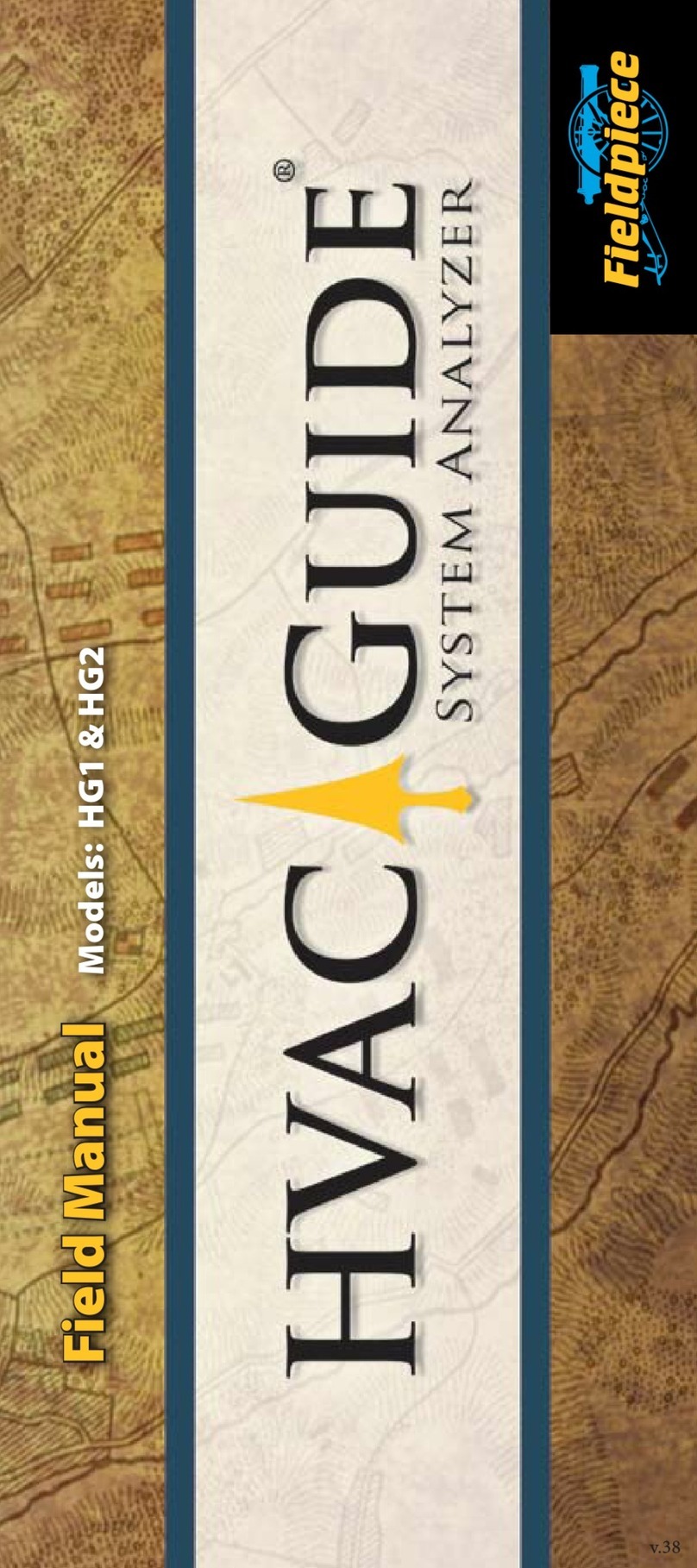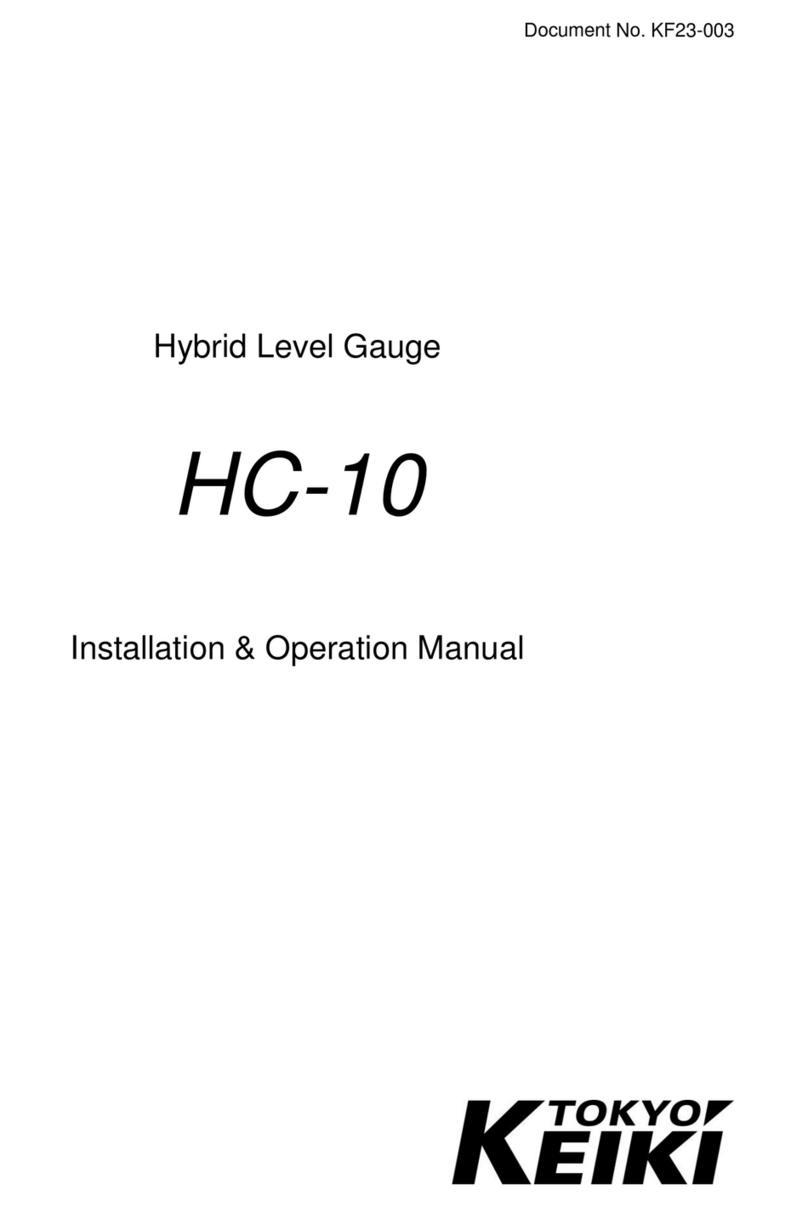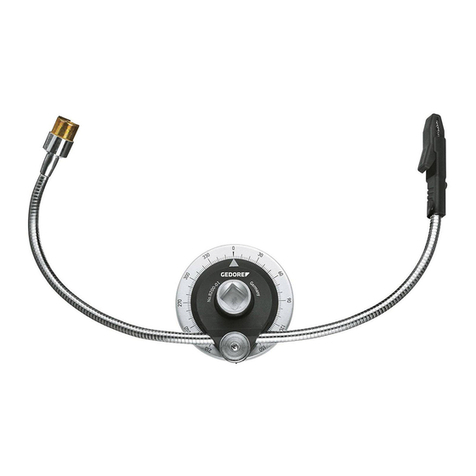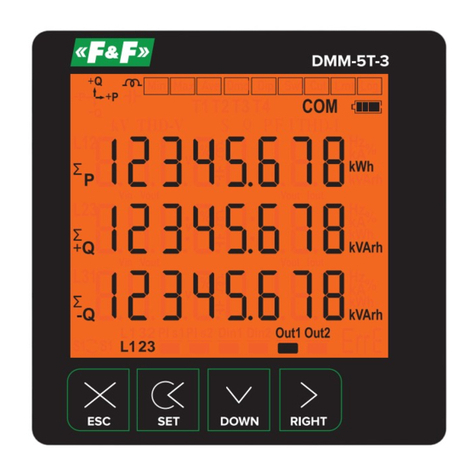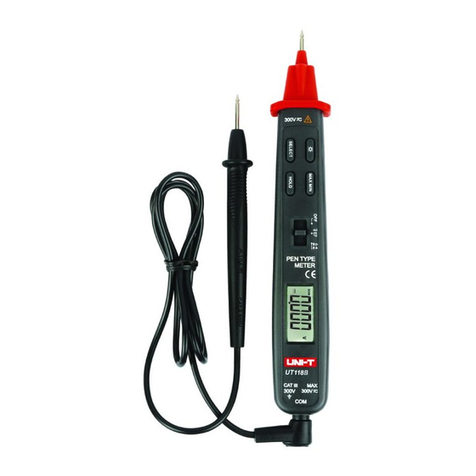CHAPTER 7:
SYSTEM TEST
STARTER SYSTEM TEST
IMPORTANT: Before starng the test, inspect the alternator
drive belt. A belt that is glazed or worn, or lacks the proper
tension, will prevent the engine from achieving the rpm levels
needed for the test.
Once you have completed an in-vehicle test, the display
alternates between the baery test results and the message.
PRESS FOR STARTER TEST.
1. Press the ENTER buon to proceed with the starter
test.
2. Start the engine when prompted.
3. The display alternates between the decision on the
starter system and the measured voltage drop.
STARTER SYSTEM TEST RESULTS
Decision Interpretaon
CRANKING
NORMAL
The starter voltage is normal and the
baery is fully charged.
LOW
VOLTAGE
The starter voltage is low and the baery
is fully charged.
CHARGE
BATTERY
The starter voltage is low and the baery
is discharged. Fully charge the baery
and repeat the starter system test.
REPLACE
BATTERY
Baery must be replaced before the
starng system can be tested.
NO START No vehicle start detected.
CRANKING
SKIPPED
A start was not detected.
CHARGING SYSTEM TEST
Once you have completed an in-vehicle test the display
alternates between the test results and the message PRESS
FOR CHARGING TEST. Press the ENTER buon to proceed
with the charging test.
CHARGING SYSTEM TEST RESULTS
Decision Interpretaon
NO
PROBLEMS
System is showing normal output from
the alternator.
NO OUTPUT No alternator output detected.
• Check the belts to ensure the
alternator is rotang with the engine
running. Replace broken or slipping
belts and retest.
• Check all connecons to and
from the alternator, especially
the connecon to the baery. If
the connecon is loose or heavily
corroded, clean or replace the cable
and retest.
• If the belts and connecons are in
good working condion, replace
the alternator. (Older vehicles use
external voltage regulators, which
may require only replacement of the
voltage regulator.)
LOW OUTPUT Alternator not providing sucient current
to power the system’s electrical loads and
charge the baery.
• Check the belts to ensure the
alternator is rotang with the engine
running. Replace broken or slipping
belts and retest.
• Check the connecons from the
alternator to the baery. If the
connecon is loose or heavily
corroded, clean or replace the cable
and retest.
HIGH
OUTPUT
Alternator voltage output exceeds the
normal limits.
• Make sure there are no loose
connecons and the ground
connecon is normal. If there are
no connecon problems, replace
the regulator. Most alternators have
a built-in regulator that requires
replacing the alternator. In older
vehicles that use external voltage
regulators, you may need to replace
only the voltage regulator.
• The regulator controls voltage
output based on the baery voltage,
under-hood temperature, and
vehicle loads used. In other words,
it controls the maximum voltage
the system can produce based on
the current needs and amount of
current that can be produced by
the spinning of the rotor in the
alternator. The normal high limit
of a typical automove regulator
is 15.0 volts +/-0,5. Refer to the
manufacturer specicaons for the
correct limit, which may vary by
vehicle type.
• A high charging rate will overcharge
the baery and may decrease
its life and cause it to fail. If the
baery test decision is REPLACE
and the charging system test shows
CHARGING VOLTAGE HIGH, check
the baery's electrolyte levels. A
symptom of overcharging is baery
uid spewing through the vent caps,
which causes low electrolyte levels
and harms the baery.














